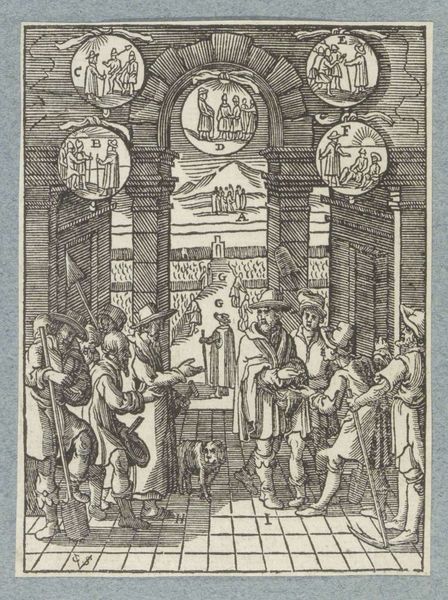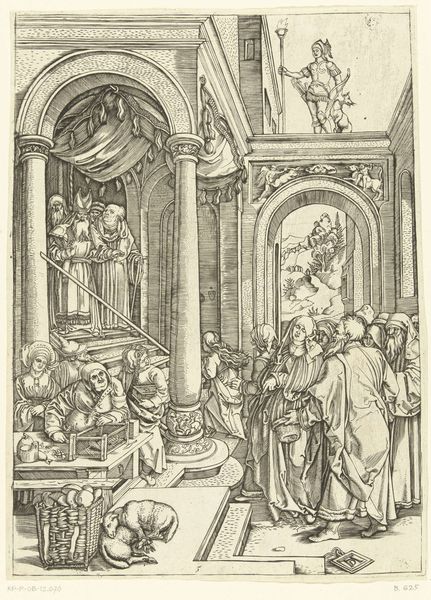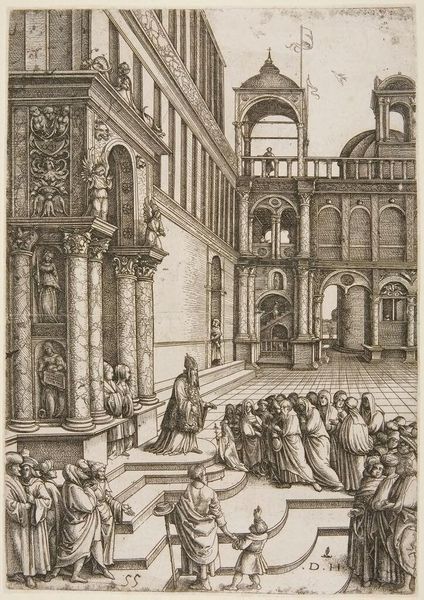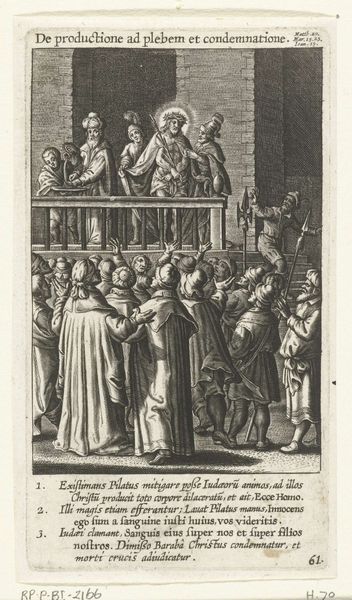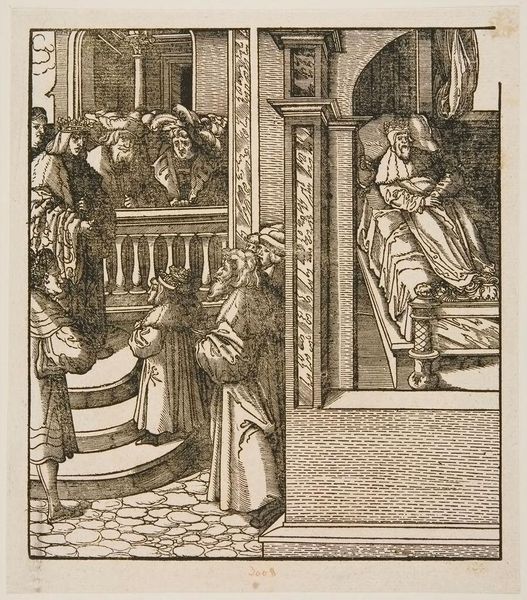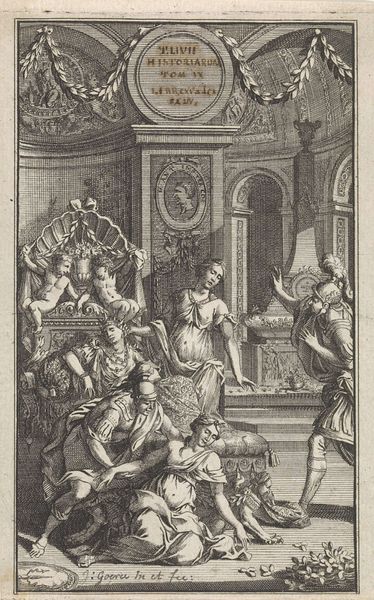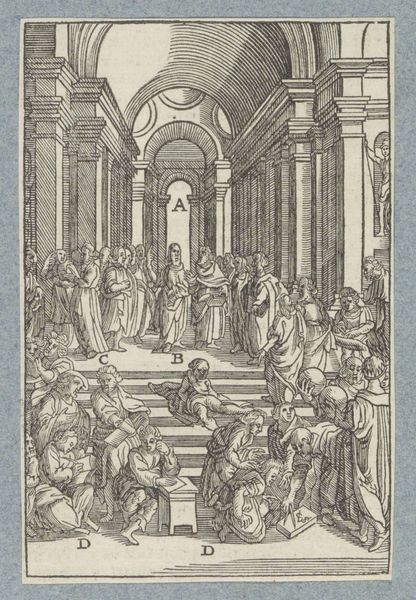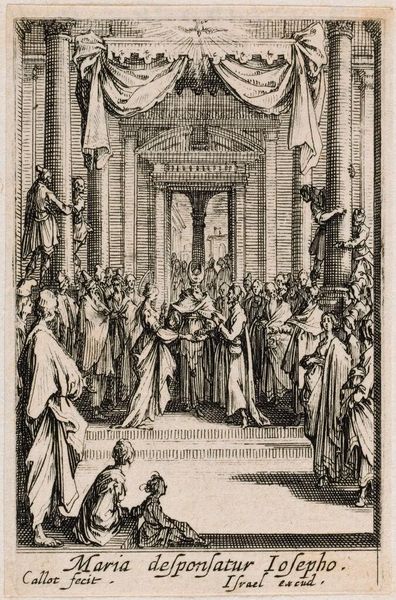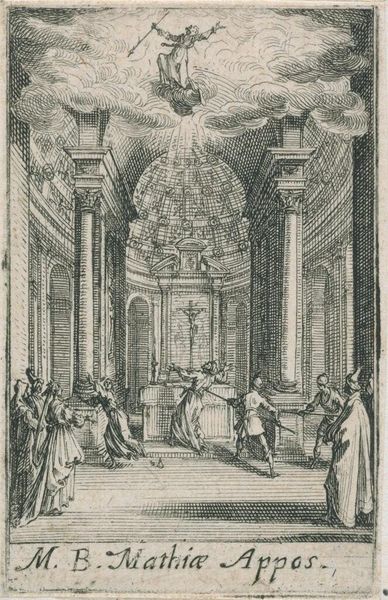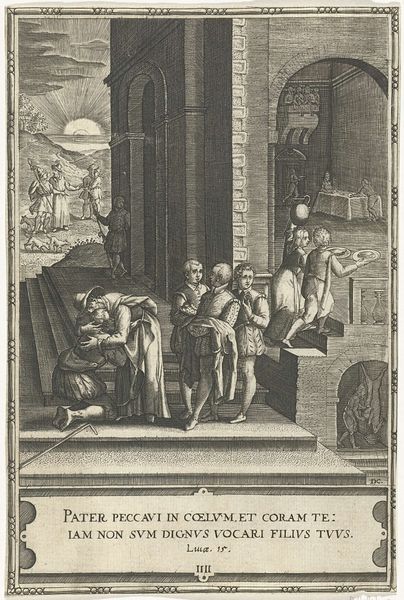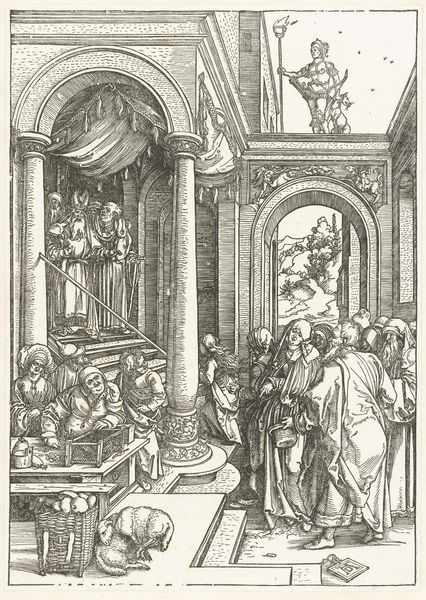
intaglio, engraving
#
pen drawing
#
intaglio
#
figuration
#
11_renaissance
#
history-painting
#
engraving
Dimensions: height 248 mm, width 165 mm
Copyright: Rijks Museum: Open Domain
Curator: This intricate engraving, titled "Onthoofding van Johannes de Doper," or "The Beheading of John the Baptist," is attributed to Frans Crabbe van Espleghem and dates back to between 1490 and 1552, placing it squarely within the Renaissance. The intaglio print style yields such sharp lines and incredible detail. What are your initial thoughts? Editor: The immediate sense of drama and grim ceremony really strikes me. It's all in the precise execution of this rather macabre event. I’m also struck by how the architectural details in the background contrast against the brutality in the foreground. Curator: Absolutely. Crabbe, working within the political and religious contexts of his time, uses the classical architectural setting to highlight power structures and moral decay. Salome stands almost central to the work. Note how this places emphasis not so much on John but on the machinations of power and feminine intrigue? Editor: And, critically, who controls it! Examining the distribution of figures within the social space it constructs is vital to interpreting its meaning. How might contemporary feminist theory understand the role and symbolism attributed to Salome here? Curator: A key question! Through that lens, it isn’t merely a story of good versus evil, or punishment for speaking truth to power. But the illustration allows us to question deeply the structures through which gendered power operates. John's decapitation becomes the price paid for challenging patriarchal dominance, but her role raises even larger themes about women’s capacity to shape politics. Editor: Indeed. In what ways can a scene such as this, made so explicit through the detailed medium, have been utilized as propaganda within religious institutions of the era, helping shape perceptions? Curator: Exactly. How images like this informed a worldview and how institutions like the church wielded them for political sway. Consider the impact that a readily reproduced image had within a given context. That it depicts a key foundational event in a foundational religious text lends considerable power, too. Editor: Analyzing historical art like this compels us to think critically not just about the narrative, but also the sociopolitical impact it wielded at the time. This allows modern audiences to comprehend art as integral within evolving cultures. Curator: By intertwining contemporary and historical narratives we get a glimpse into this work’s lasting capacity to unsettle.
Comments
No comments
Be the first to comment and join the conversation on the ultimate creative platform.
